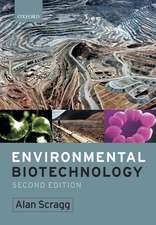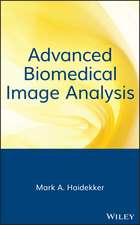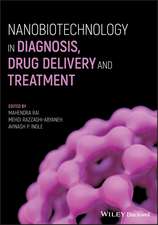Nanotechnology in Medicine – Toxicity and Safety
Autor M Raien Limba Engleză Hardback – 17 noi 2021
Discover thorough insights into the toxicology of nanomaterials used in medicine
In Nanotechnology in Medicine: Toxicity and Safety, an expert team of nanotechnologists delivers a robust and up-to-date review of current and future applications of nanotechnology in medicine with a special focus on neurodegenerative diseases, cancer, diagnostics, nano-nutraceuticals, dermatology, and gene therapy. The editors offer resources that address nanomaterial safety, which tends to be the greatest hurdle to obtaining the benefits of nanomedicine in healthcare.
The book is a one-stop resource for recent and comprehensive information on the toxico logical and safety aspects of nanotechnology used in human health and medicine. It provides readers with cutting-edge techniques for delivering therapeutic agents into targeted cellular compartments, cells, tissues, and organs by using nanoparticulate carriers. The book also offers methodological considerations for toxicity, safety, and risk assessment.
Nanotechnology in Medicine: Toxicity and Safety also provides readers with:
- A thorough introduction to the nanotoxicological aspects of nanomedicine, including translational nanomedicine and nanomedicine personalization
- Comprehensive introductions to nanoparticle toxicity and safety, including selenium nanoparticles and metallic nanoparticles
- Practical discussions of nanotoxicology and drug delivery, including gene delivery using nanocarriers and the use of nanomaterials for ocular delivery applications
- In-depth examinations of nanotechnology ethics and the regulatory framework of nanotechnology and medicine
Perfect for researchers, post-doctoral candidates, and specialists in the fields of nanotechnology, nanomaterials, and nanocarriers, Nanotechnology in Medicine: Toxicity and Safety will also prove to be an indispensable part of the libraries of nanoengineering, nanomedicine, and biopharmaceutical professionals and nanobiotechnologists.
Preț: 956.05 lei
Preț vechi: 1050.60 lei
-9% Nou
182.96€ • 190.31$ • 151.05£
Carte tipărită la comandă
Livrare economică 14-28 aprilie
Specificații
ISBN-10: 1119769868
Pagini: 448
Dimensiuni: 185 x 261 x 33 mm
Greutate: 0.99 kg
Editura: Wiley
Locul publicării:Chichester, United Kingdom
Descriere
NANOTECHNOLOGY IN MEDICINE
Discover thorough insights into the toxicology of nanomaterials used in medicine
In Nanotechnology in Medicine: Toxicity and Safety, an expert team of nanotechnologists delivers a robust and up-to-date review of current and future applications of nanotechnology in medicine with a special focus on neurodegenerative diseases, cancer, diagnostics, nano-nutraceuticals, dermatology, and gene therapy. The editors offer resources that address nanomaterial safety, which tends to be the greatest hurdle to obtaining the benefits of nanomedicine in healthcare.
The book is a one-stop resource for recent and comprehensive information on the toxico logical and safety aspects of nanotechnology used in human health and medicine. It provides readers with cutting-edge techniques for delivering therapeutic agents into targeted cellular compartments, cells, tissues, and organs by using nanoparticulate carriers. The book also offers methodological considerations for toxicity, safety, and risk assessment.
Nanotechnology in Medicine: Toxicity and Safety also provides readers with:
- A thorough introduction to the nanotoxicological aspects of nanomedicine, including translational nanomedicine and nanomedicine personalization
- Comprehensive introductions to nanoparticle toxicity and safety, including selenium nanoparticles and metallic nanoparticles
- Practical discussions of nanotoxicology and drug delivery, including gene delivery using nanocarriers and the use of nanomaterials for ocular delivery applications
- In-depth examinations of nanotechnology ethics and the regulatory framework of nanotechnology and medicine
Perfect for researchers, post-doctoral candidates, and specialists in the fields of nanotechnology, nanomaterials, and nanocarriers, Nanotechnology in Medicine: Toxicity and Safety will also prove to be an indispensable part of the libraries of nanoengineering, nanomedicine, and biopharmaceutical professionals and nanobiotechnologists.







